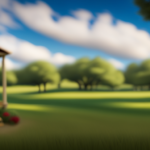Beginners Guides
Where Are Tiny House Communities
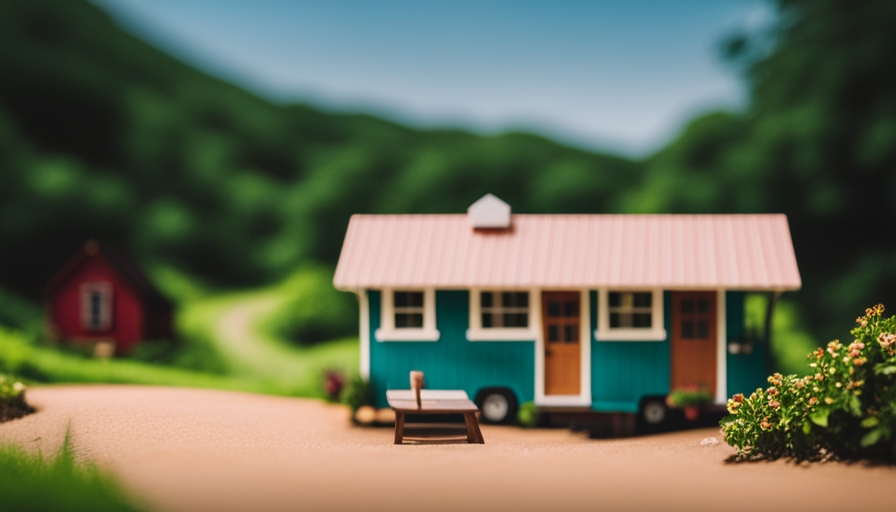
Imagine a planet where minuscule homes are scattered across the scenery, embedded in natural surrounds, fostering a feeling of togetherness and uncomplicated living. These compact abodes, typically not exceeding a few hundred square feet, represent a movement towards minimalism and eco-friendly lifestyles. However, where does one go to discover these distinctive communities of tiny houses?
In this article, I will take you on a journey to some of the most sought-after locations in the United States. From the lush forests of the Pacific Northwest to the vibrant streets of Austin, Texas, and the picturesque coast of Oregon, there are tiny house communities sprouting up in every corner of the country. Whether you dream of waking up to breathtaking mountain views or enjoying the laid-back beach lifestyle, these communities offer a chance to embrace the tiny house movement and forge connections with like-minded individuals.
So, let’s grab our metaphorical compass and explore the hidden gems of the tiny house world.
Key Takeaways
- The Pacific Northwest, specifically the Oregon coast, Asheville in North Carolina, Austin in Texas, and Colorado are popular locations for tiny house communities.
- These communities offer attractive regulations for tiny house living, including specific requirements for size and design to blend in with the environment.
- Tiny house communities near beachfront areas in Florida provide a unique and idyllic lifestyle, with outdoor activities and beach adventures.
- Oregon Coast has charming and affordable tiny house communities in towns such as Astoria, Cannon Beach, and Newport, promoting a sense of community and connection while preserving the natural beauty of the area.
Pacific Northwest, USA
Tiny house communities are becoming increasingly popular in the Pacific Northwest, USA, as more people are embracing minimalist lifestyles and seeking sustainable housing options.
The Pacific Northwest, known for its stunning natural beauty and progressive mindset, has become a haven for those looking to downsize and live in a more intentional way. One of the reasons why the Pacific Northwest is so attractive to tiny house enthusiasts is its tiny house friendly regulations. Many cities and towns in this region have embraced the tiny house movement and have created zoning laws that allow for the construction and placement of these unique dwellings.
In particular, the Oregon coast has become a hotspot for tiny house communities. With its breathtaking scenery and mild climate, it’s no wonder why so many people are flocking to this area. The warm climate allows for year-round outdoor activities and a slower pace of life, which aligns perfectly with the minimalist lifestyle that tiny house living offers.
Whether you’re looking for a permanent residence or a vacation getaway, the Oregon coast offers a variety of tiny house communities to choose from.
Now, let’s transition to the subsequent section about Asheville, North Carolina, another popular destination for tiny house communities.
Asheville, North Carolina
Nestled in the picturesque mountains of Asheville, North Carolina, a vibrant and close-knit community thrives, embracing the concept of living simply and sustainably. Asheville has become a hub for tiny house enthusiasts, attracting people from all over the country who are looking to downsize and live more intentionally.
The city is home to several reputable tiny home builders who specialize in creating unique and customized designs. These builders work closely with residents to bring their vision to life, ensuring that every tiny home is a reflection of its owner’s personality and lifestyle.
In addition to the thriving tiny house community, Asheville also hosts annual tiny house festivals that draw large crowds. These festivals provide an opportunity for tiny house enthusiasts to gather, exchange ideas, and showcase their innovative designs. Visitors can explore a variety of tiny homes, ranging from rustic cabins to modern, minimalist dwellings. The festivals also feature workshops and seminars on topics such as sustainable living, off-grid technologies, and creative space-saving solutions.
Asheville’s commitment to sustainability and its welcoming atmosphere have made it an ideal location for tiny house enthusiasts. However, if you’re looking for another city that embraces the tiny house movement, let’s head to Austin, Texas.
Austin, Texas
Tucked away in the heart of Texas, Austin emerges as a thriving haven for those seeking a simpler and more intentional way of living. With its warm weather and vibrant outdoor scene, it’s no wonder that tiny house communities have found a home in this bustling city.
-
Barton Springs: One of Austin’s beloved landmarks, Barton Springs is a natural spring-fed pool that offers a refreshing escape from the Texas heat. It’s a popular spot for locals to cool off and enjoy the great outdoors.
-
Zilker Park: Spanning over 350 acres, Zilker Park is a paradise for outdoor enthusiasts. From hiking and biking trails to kayaking on Lady Bird Lake, there’s no shortage of activities to keep you active and connected to nature.
-
South Congress: Known for its eclectic shops, vibrant music scene, and mouthwatering food trucks, South Congress is a must-visit destination for anyone living in Austin. Grab a bite to eat, shop for unique treasures, and soak in the lively atmosphere.
-
Rainey Street: This once-residential area has transformed into a quirky neighborhood filled with converted houses turned into bars and restaurants. Experience the vibrant nightlife and grab a drink at one of Rainey Street’s unique establishments.
-
Lady Bird Lake: Located in the heart of downtown Austin, Lady Bird Lake offers a serene escape from the city’s hustle and bustle. Rent a kayak or paddleboard and explore the tranquil waters while taking in the stunning views of the city skyline.
Transitioning to the next section about Colorado, the tiny house community in Austin provides a glimpse into the vibrant and active lifestyle that awaits those seeking a new adventure in the Rocky Mountains.
Colorado
Colorado beckons with its majestic mountains, inviting outdoor enthusiasts to embark on a new adventure amidst nature’s breathtaking beauty. It’s also home to several tiny house communities that offer affordable housing options while promoting sustainability.
Colorado’s commitment to preserving the environment is evident in these communities, where residents embrace a minimalist lifestyle and reduce their carbon footprint. These communities provide an opportunity for like-minded individuals to come together and create a close-knit community that values sustainable living.
One notable tiny house community in Colorado is the WeeCasa Tiny House Resort located in Lyons. It offers a unique experience for visitors who want to immerse themselves in the tiny house movement. The resort features a variety of tiny houses, each with its own distinct design and layout. Visitors can rent these tiny houses and experience the simplicity and charm of tiny living.
Another noteworthy community is the Sprout Tiny Homes Village in Durango. This community focuses on providing affordable and sustainable housing options for individuals and families. With a strong emphasis on energy efficiency and eco-friendly practices, the Sprout Tiny Homes Village showcases the potential of tiny homes as a solution to the affordable housing crisis.
Transitioning into the next section, Florida offers its own unique opportunities for tiny house enthusiasts.
Florida
Florida is an ideal destination for those seeking a warm climate, beautiful beaches, and a plethora of outdoor activities. The year-round sunshine and mild temperatures make it a haven for those who enjoy spending time outdoors.
Additionally, Florida has become a popular location for tiny house communities due to its favorable regulations and growing interest in sustainable living.
Warm climate
In warm climates, you’ll find plenty of tiny house communities where residents can enjoy the sunshine and a close-knit community. These communities offer a unique opportunity for beachfront living, allowing residents to wake up to the sound of crashing waves and the smell of salty air.
Imagine living in a tropical paradise, surrounded by palm trees and vibrant flowers, where the days are filled with warmth and relaxation. The warm climate in these tiny house communities provides the perfect backdrop for outdoor activities and beach adventures. Whether it’s surfing, swimming, or simply lounging on the sand, there’s no shortage of things to do in these idyllic locations.
So, as we move on to the next section about beaches and outdoor activities, get ready to dive into a world of sun, sand, and endless fun.
Beaches and outdoor activities
After exploring the warm climate options for tiny house communities, I’m now excited to dive into the topic of beaches and outdoor activities. Living in a tiny house community near the beach offers a unique and idyllic lifestyle. Imagine waking up every morning to the sound of crashing waves and being just steps away from the sandy shores.
Not only can you enjoy beachfront living, but these communities also often organize community events like beach clean-ups, yoga sessions on the sand, and bonfires under the stars. It’s a wonderful opportunity to connect with like-minded individuals who share a love for the ocean and outdoor activities.
Now, let’s transition into the next section and explore the regulations that make these beachside tiny house communities possible.
Tiny house-friendly regulations
Living near the beach feels like living in paradise, especially when you discover the surprisingly accommodating regulations for these dreamy coastal communities. Many beach towns have embraced the tiny house movement and have created tiny house-friendly zoning and building codes.
These regulations allow for the construction and placement of tiny houses in designated areas, making it easier for people to live in these small but efficient homes near the beach. These communities often have specific requirements for the size and design of the tiny houses, ensuring that they blend in with the surrounding environment and maintain the charm of the area.
With these flexible regulations in place, living in a tiny house near the beach becomes a feasible and enticing option for those seeking a simpler and more sustainable lifestyle. Moving on to the Oregon coast, you’ll find even more opportunities to embrace the tiny house living experience.
Oregon Coast
Discover the charming tiny house communities scattered along the beautiful Oregon Coast. With its stunning landscapes and laid-back atmosphere, the Oregon Coast has become a popular destination for those seeking a simpler way of life. Tiny house regulations in this area have played a key role in creating affordable housing options and fostering a sense of community.
-
Astoria: Nestled at the mouth of the Columbia River, Astoria boasts a vibrant tiny house community. Here, you’ll find a mix of permanent residents and vacation rentals, with a variety of architectural styles and sizes to choose from.
-
Cannon Beach: Known for its picturesque coastline and iconic Haystack Rock, Cannon Beach offers a unique tiny house experience. The town has embraced the tiny house movement, allowing homeowners to build their dream homes while preserving the natural beauty of the area.
-
Newport: Located on the central coast, Newport is home to several tiny house communities. These communities provide affordable housing options for both permanent residents and vacationers, with easy access to the beach and stunning coastal views.
The Oregon Coast’s tiny house communities not only offer affordable housing options but also promote a sense of community and connection. Whether you’re looking for a permanent residence or a vacation getaway, these communities provide a unique opportunity to live a simpler, more sustainable lifestyle.
Frequently Asked Questions
What are the common amenities provided in tiny house communities?
In tiny house communities, we come together to share more than just a roof. From cozy common areas to vibrant community events, these spaces foster connection and create a sense of belonging.
Are there any age restrictions for living in tiny house communities?
There may be age restrictions in some tiny house communities, as they cater to specific demographics. However, living in a tiny house community offers numerous benefits such as a sense of community, affordability, and a simpler lifestyle.
How do tiny house communities handle waste management and sewage?
Tiny house communities handle waste management and sewage through various sustainable solutions. These include composting toilets, gray water recycling systems, and community-wide recycling programs. These measures ensure efficient and eco-friendly management of waste and sewage.
Are pets allowed in tiny house communities?
Pets are often allowed in tiny house communities, with many adopting pet-friendly policies. Having pets can provide companionship and improve mental health for residents. However, it’s important to check specific community rules regarding pet ownership and any associated fees or restrictions.
Can residents customize their tiny houses or are there any restrictions on modifications?
Residents in tiny house communities can customize their homes, but face challenges due to limited space. Tiny house design trends focus on maximizing storage, multi-functional furniture, and creative use of space.
Conclusion
In conclusion, these tiny house communities are like hidden treasures scattered across the country, waiting to be discovered. Just like the endless possibilities that come with living in a tiny house, these communities offer a sense of freedom, simplicity, and connection with nature.
They are like vibrant flowers blooming in the vast meadows of the Pacific Northwest, Asheville, Austin, Colorado, Florida, and the Oregon Coast. Each community has its own unique charm, creating a tapestry of diverse lifestyles and experiences.
So, go on an adventure and find your own tiny house community, where dreams take root and grow.
Hi, I’m Emma. I’m the Editor in Chief of Tiny House 43, a blog all about tiny houses. While tree houses are often associated with childhood, they can be the perfect adult retreat. They offer a cozy space to relax and unwind, surrounded by nature. And since they’re typically built on stilts or raised platforms, they offer stunning views that traditional homes simply can’t match. If you’re looking for a unique and romantic getaway, a tree house tiny house might just be the perfect option.
Beginners Guides
How Do I Get Rid of Tiny White Bugs on My House Plants

- Health risks associated with tiny white bugs on house plants.
- Effective methods to prevent infestations of tiny white bugs on house plants
I am facing a small white insect issue with my indoor plants, and it is really frustrating me! These annoying bugs seem to be multiplying quickly, causing damage to my precious plants.
But fear not, my fellow plant enthusiasts, for I’ve done my research and found some effective solutions to eliminate these unwelcome guests.
In this article, I’ll share with you the knowledge and remedies I’ve discovered, so you too can reclaim your bug-free, thriving indoor garden.
Key Takeaways
- Aphids, mealybugs, and whiteflies are common types of tiny white bugs found on house plants.
- Lack of proper plant care, overwatering, and bringing infested plants indoors can lead to bug infestations.
- Homemade insecticides using water and dish soap or neem oil can suffocate and disrupt the feeding patterns of pests.
- Regular cleaning and inspection routines help detect and address pest issues early on.
Identifying the Tiny White Bugs on Your House Plants
I can easily spot the tiny white bugs on my house plants by carefully examining the leaves and stems. The most common species of these pests found on house plants are aphids, mealybugs, and whiteflies.
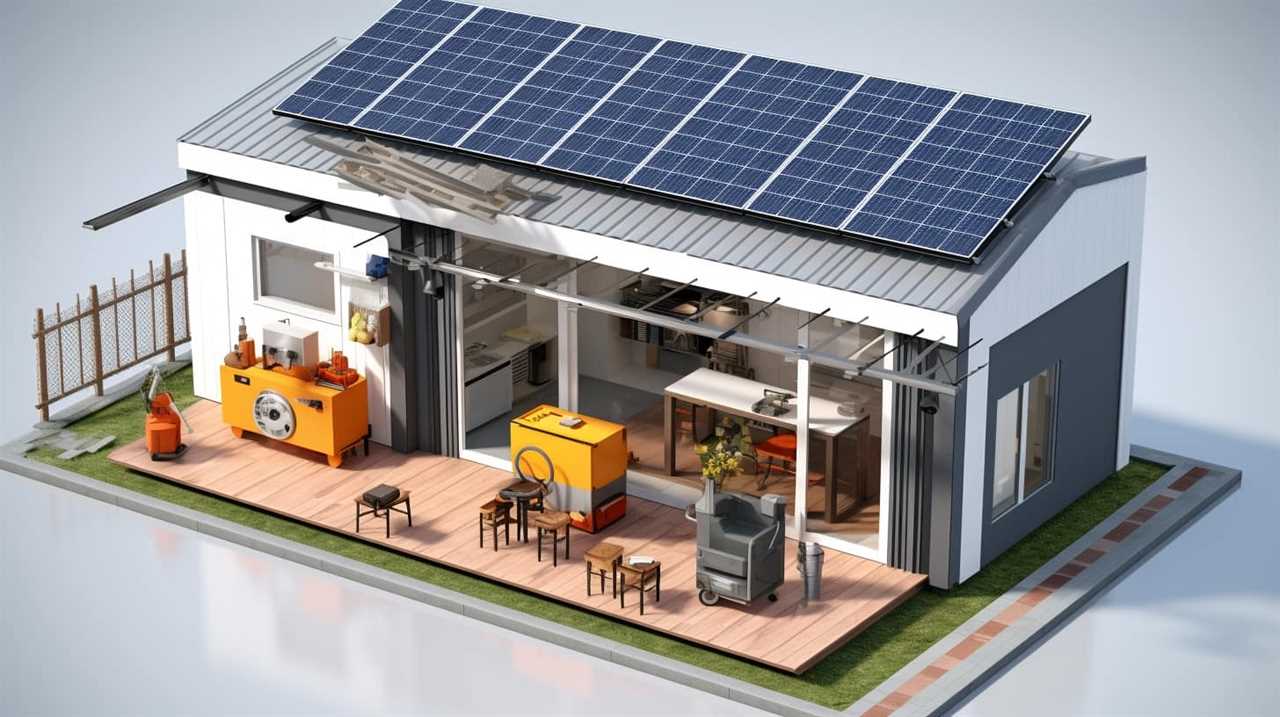
Aphids are small, pear-shaped insects that cluster on new leaves and buds.
Mealybugs are covered in a white, waxy substance and can be found on the undersides of leaves and in leaf axils.
Whiteflies, as the name suggests, are tiny white insects that fly around when disturbed.
An infestation of these tiny white bugs can cause significant damage to your house plants. Signs of infestation include yellowing leaves, stunted growth, distorted foliage, and a sticky residue called honeydew on the leaves. Furthermore, these pests can transmit plant diseases, weaken the plant’s immune system, and attract other pests.
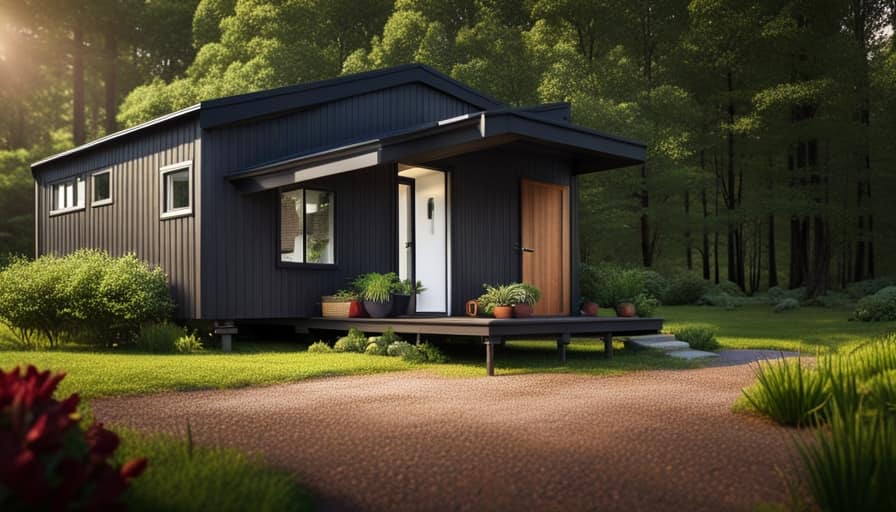
Understanding the causes of infestation is crucial in effectively getting rid of these tiny white bugs on your house plants.
Understanding the Causes of Infestation
Understanding the causes of infestation is essential in effectively eliminating these tiny white bugs on my house plants. Here are a few key factors to consider:
- Lack of proper plant care: Neglecting to provide adequate water, sunlight, and nutrients can weaken plants, making them more susceptible to bug infestations.
- Overwatering: Excessive moisture can create a favorable environment for pests like aphids and mealybugs.
- Bringing infested plants indoors: Introducing plants from outside without proper inspection can bring unwanted bugs into your home.
Recognizing the signs of bug damage is crucial for preventing infestation. Look out for yellowing, wilting leaves, sticky residue on leaves and stems, and tiny white bugs crawling on the plant’s surface.
Now that we understand the causes of infestation, let’s explore natural remedies to eliminate these pesky bugs.
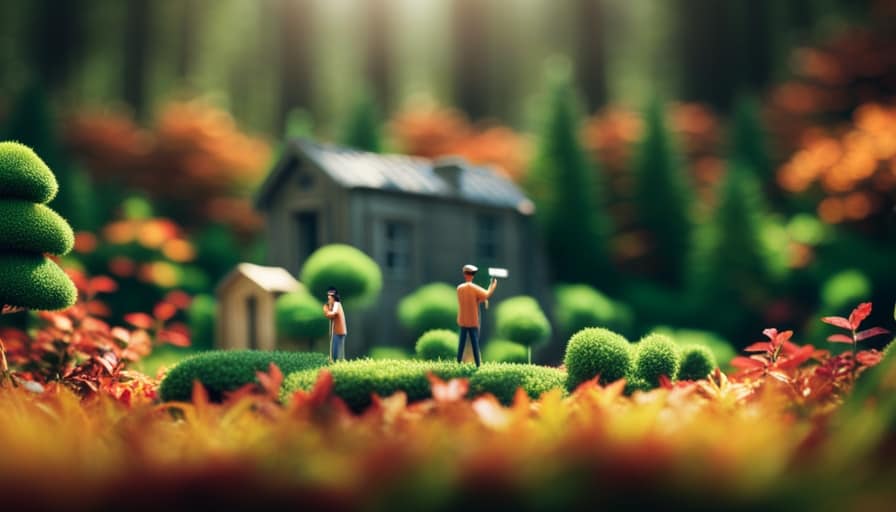
Natural Remedies to Eliminate the Bugs
To effectively get rid of these tiny white bugs on my house plants, I’ll need to rely on natural remedies that can eliminate them without harming the plants.
One effective option is to create homemade insecticides using ingredients readily available in your kitchen. You can mix a solution of water and dish soap, or water and neem oil, and spray it directly on the affected plants. These solutions work by suffocating the pests and disrupting their feeding patterns.
Another natural approach is to introduce insect-repelling plants into your garden. Plants like lavender, mint, and marigold emit fragrances that repel insects, keeping them away from your precious plants.
Chemical Solutions for a Lasting Bug-Free Environment
One effective chemical solution for achieving a bug-free environment is using a professional-grade insecticide spray. These sprays are specifically formulated to target and eliminate pests, including tiny white bugs on house plants. When using a professional-grade insecticide spray, it’s important to follow the instructions provided by the manufacturer to ensure safe and effective use.
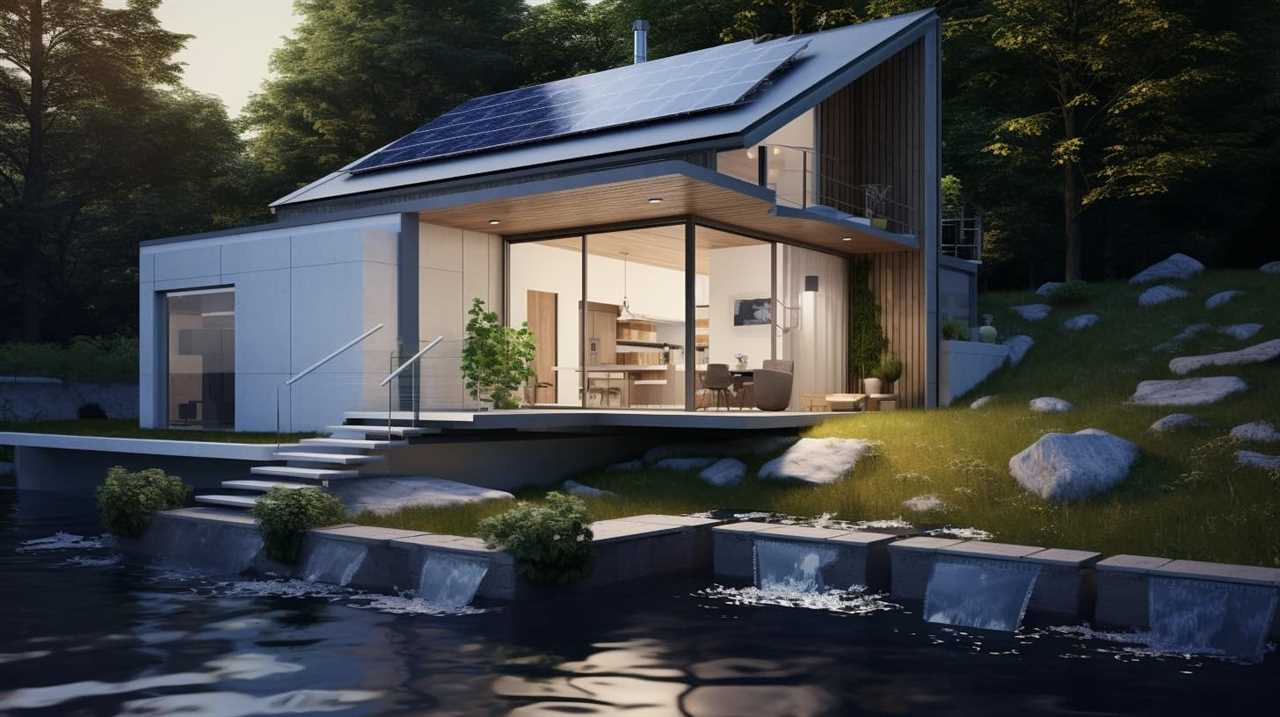
Additionally, consider these non-toxic alternatives to chemical solutions for pest control:
-
Neem oil: Derived from the neem tree, neem oil is a natural insecticide that can be effective against a wide range of pests. It works by disrupting the insect’s life cycle and repelling them from plants.
-
Insecticidal soap: Made from potassium salts of fatty acids, insecticidal soap works by suffocating pests on contact. It’s safe to use on most plants and can be an effective solution against white bugs.
-
Diatomaceous earth: This powdery substance is made from fossilized remains of diatoms and acts as a desiccant, drying out and killing insects.
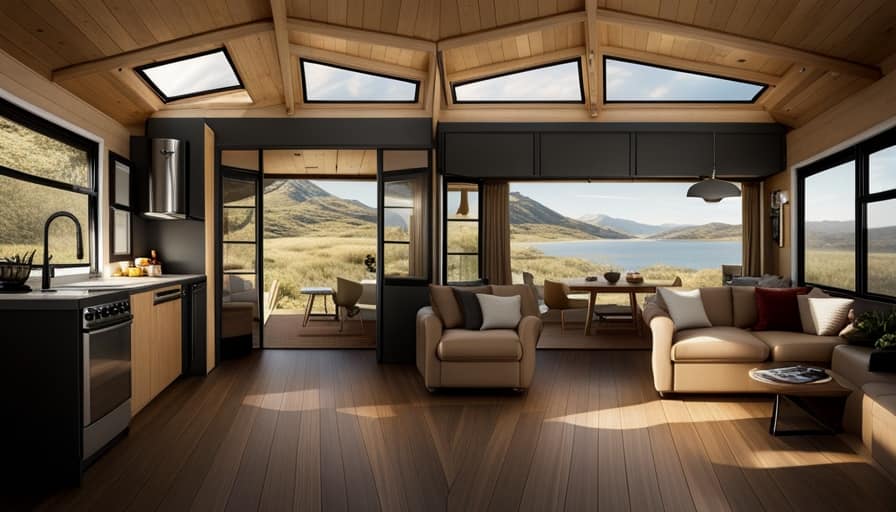
When using any chemical solution or non-toxic alternative, it’s essential to monitor the plants closely and repeat the treatment as necessary to maintain a bug-free environment. Professional pest control services can also provide expert guidance and assistance in achieving long-lasting results.
Preventing Future Infestations and Maintaining Healthy House Plants
To effectively prevent future infestations and maintain healthy house plants, I will implement a regular cleaning and inspection routine. This will help ensure that any signs of pests or diseases are detected early on and addressed promptly. Regularly cleaning the leaves and stems of my plants with a mild soap and water solution will help remove any dust or debris that can attract pests. Additionally, I will inspect the plants for any signs of infestation, such as white bugs or sticky residue on the leaves. To further enhance plant hygiene, I will also consider using beneficial insects, such as ladybugs or lacewings, which feed on common plant pests like aphids. By incorporating these practices into my routine, I can maintain healthy house plants and prevent future infestations.
| Regular Cleaning | Inspection Routine | Using Beneficial Insects |
| Remove dust and debris | Check for signs of infestation | Introduce ladybugs or lacewings to control pests |
| Promotes plant hygiene | Detect and address issues early | Natural pest control method |
| Prevents pest attraction | Maintain healthy house plants | Encourages ecosystem balance |
Frequently Asked Questions
Can These Tiny White Bugs Harm Humans?
Yes, tiny white bugs on house plants can harm humans. They can cause skin irritations and allergic reactions. It’s important to take steps to prevent infestations, such as regularly inspecting and cleaning your plants.
How Long Does It Take for Natural Remedies to Eliminate the Bugs Completely?
To completely eliminate the tiny white bugs using natural remedies, it typically takes a few weeks of consistent application. However, the effectiveness of these remedies can vary. It’s important to avoid common mistakes like under-applying or using incorrect remedies.
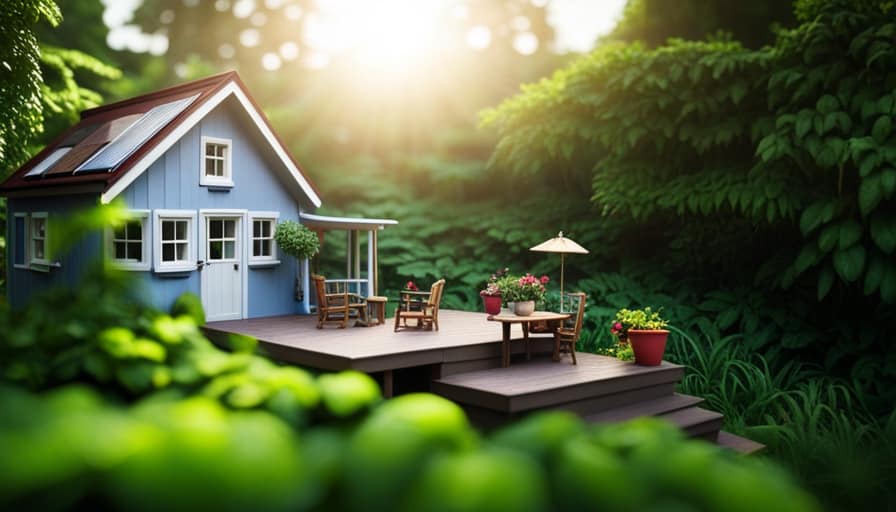
Are There Any Specific Types of House Plants That Are More Prone to Infestations?
Certain house plants, like lavender and marigolds, have natural repellent properties that can help prevent infestations. It’s important to choose plants that are known to repel bugs and to regularly inspect and clean your plants to avoid any potential infestations.
Can These Bugs Spread From One House Plant to Another?
Oh, the joy of tiny white bugs on house plants! Yes, these pests can spread from one plant to another. To control them, use insecticides and watch out for signs of infestation like sticky residue or wilting leaves.
How Often Should I Check My House Plants for Signs of Infestation?
I check my house plants for signs of infestation regularly to ensure their health. Common signs include tiny white bugs and yellowing leaves. Preventative measures like proper watering and cleaning can help keep plants bug-free.
Conclusion
In conclusion, taking care of our house plants goes beyond watering and sunlight. Identifying and eliminating tiny white bugs is a crucial part of maintaining a healthy environment for our plants.
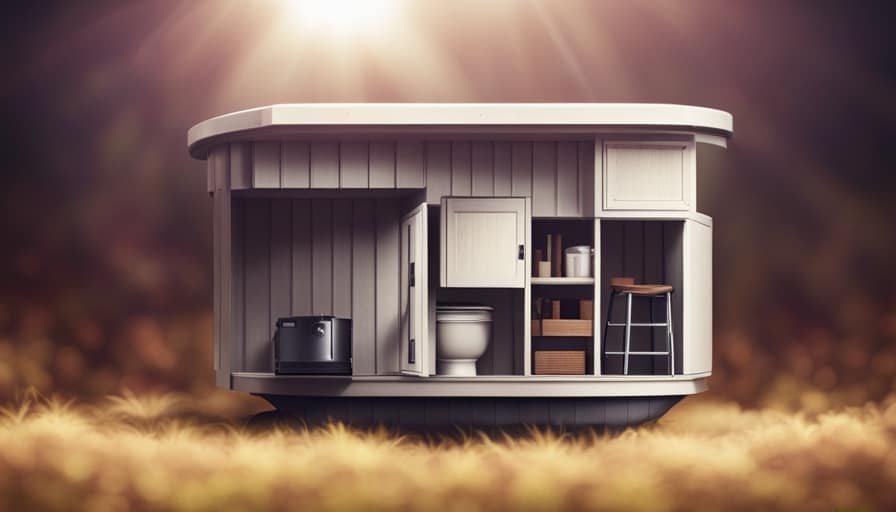
By understanding the causes of infestation and using natural or chemical remedies, we can ensure a bug-free environment. Remember, prevention is key, so regularly inspect your plants and take necessary measures to keep them thriving.
Happy gardening!
I’m Theodore, and I love tiny houses. In fact, I’m the author of Tiny House 43, a book about tiny houses that are also tree houses. I think they’re magical places where imaginations can run wild and adventures are just waiting to happen.
While tree houses are often associated with childhood, they can be the perfect adult retreat. They offer a cozy space to relax and unwind, surrounded by nature. And since they’re typically built on stilts or raised platforms, they offer stunning views that traditional homes simply can’t match.
If you’re looking for a unique and romantic getaway, a tree house tiny house might just be the perfect option.
Beginners Guides
How Do I Get Rid of Tiny Moths in My House

I have experienced the frustration of dealing with tiny moths flying around my food in the kitchen. But do not worry, I have a solution for you.
In this article, I’ll show you how to banish those pesky moths from your house for good. We’ll dive into identifying different moth species, understanding what attracts them, and simple prevention techniques you can implement.
Plus, I’ll share some natural remedies and professional options as a last resort. Say goodbye to those unwanted guests!
Key Takeaways
- Identifying the specific moth species is crucial for implementing targeted control measures.
- Moths are attracted to food sources, fabrics, and organic materials, so it’s important to store food in airtight containers and keep the house clean.
- Moths prefer dark, undisturbed areas to lay their eggs, so sealing cracks and openings in walls, windows, and doors can help prevent infestation.
- If natural remedies and DIY methods fail, it is advisable to seek professional pest control services for thorough inspection and tailored treatment plans.
Identifying the Culprits: What Type of Moth Is Invading Your Home
I can’t figure out what kind of moth is infesting my home. It’s frustrating not knowing the exact species, as different moths have different behaviors and habits. Identifying the culprits is crucial in order to effectively address the problem.
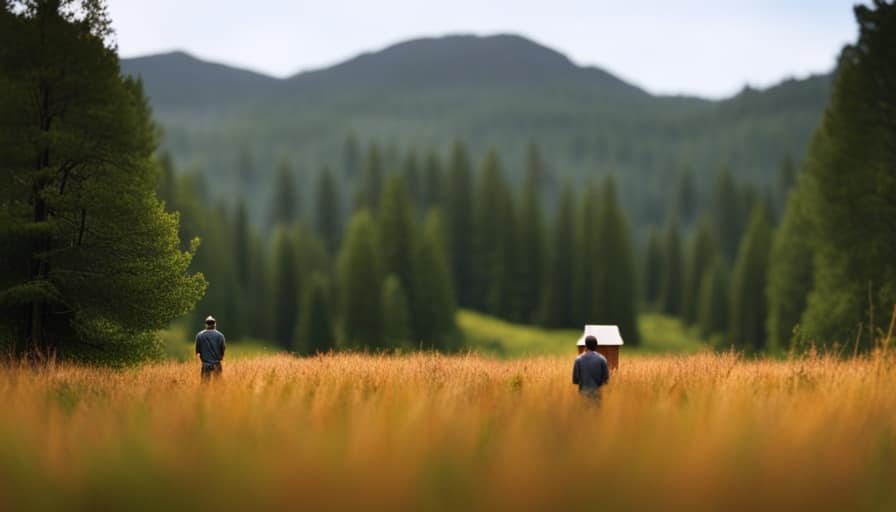
There are several common moth species that are known to invade homes, such as the Indian mealmoth, clothes moth, and pantry moth. Each species has distinct characteristics that can help with identification. Understanding their behavior is also important as it can give insights into their lifecycle and potential sources of infestation.
Moths are attracted to food sources, fabrics, and other organic materials. They can lay eggs in stored grains, textiles, or even pet food. By understanding the specific species and their behavior, it becomes easier to implement targeted control measures and prevent further infestations.
Understanding the Infestation: Why Are Moths Attracted to Your House
To effectively address the infestation, it’s essential to understand why moths are attracted to your house. Here are four reasons why moths may be flocking to your home:
-
Food sources: Moths are attracted to food, especially grains, cereals, and dried fruits. They can easily find their way into your pantry and feast on these items.
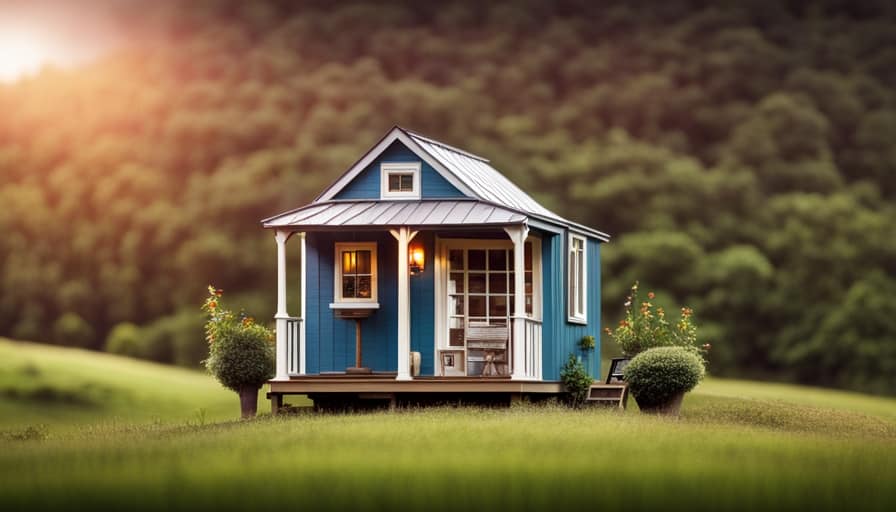
-
Moisture and humidity: Moths thrive in damp environments, making your house an ideal breeding ground if there are areas with high humidity or water leaks.
-
Suitable habitat: Moths are drawn to dark, undisturbed areas where they can lay their eggs undisturbed. This includes closets, attics, and basements.
-
Outdoor attraction: Moths can be attracted to your house from the outside, especially if you have outdoor lights that are left on at night.
Understanding moth behavior and their attraction to your house is crucial in preventing further infestation. By addressing these factors, you can take steps to keep moths at bay and protect your home.

Here are some moth prevention tips:
- Store food in airtight containers.
- Keep your house clean and free of crumbs or spills.
- Fix any leaks or moisture issues promptly.
- Use moth repellents or traps in vulnerable areas.
Prevention Is Key: Simple Steps to Keep Moths From Entering Your Home
Prevention is essential, so I’ll share some simple steps to keep moths from entering your home. By taking a proactive approach, you can create an inhospitable environment for moths and minimize the risk of infestations. One effective method is to use moth repellent products, such as sachets or sprays, in areas where moths are commonly found. These repellents contain chemicals that deter moths from entering your home. Additionally, it is crucial to seal any cracks or openings in your walls, windows, and doors. Moths can easily slip through these tiny gaps, so using caulk or weatherstripping can help keep them out. Regularly vacuuming and cleaning your home can also eliminate moth eggs or larvae that may be hiding in carpets or corners. By implementing these preventive measures, you can ensure a moth-free home environment.
| Steps to Keep Moths Away | |
|---|---|
| Use moth repellent products | Seal cracks and openings |
| Regularly vacuum and clean |
Natural Remedies: Non-Toxic Solutions to Get Rid of Moths
One effective way to get rid of moths naturally is by using a combination of vinegar and water to create a non-toxic moth spray. Here are some natural remedies you can try:
-
Vinegar and water spray: Mix equal parts vinegar and water in a spray bottle. Spray this solution on areas where moths are present, such as closets, drawers, and pantry shelves. The strong odor of vinegar repels moths and prevents them from laying eggs.
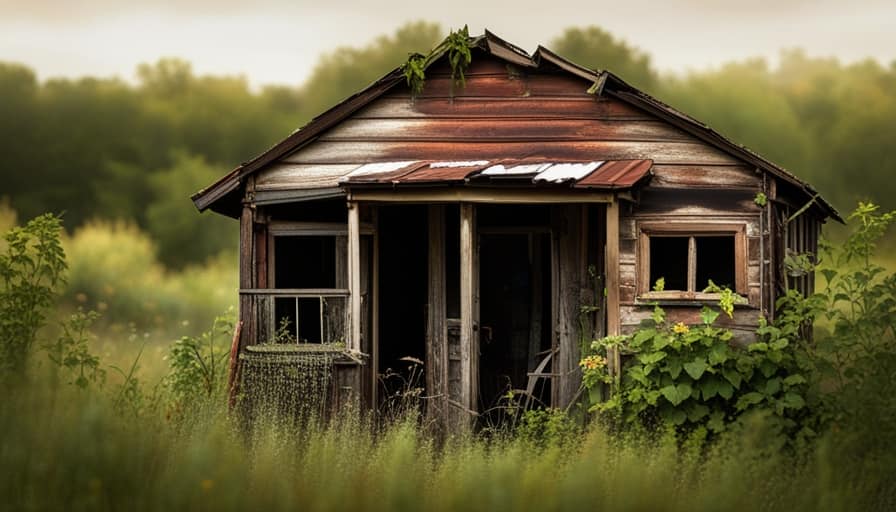
-
Cedar chips: Moths dislike the smell of cedar, so placing cedar chips in your closets and drawers can help deter them. You can also use cedar oil or cedar sachets for the same effect.
-
Homemade traps: Create simple moth traps by placing a mixture of vinegar, sugar, and dish soap in a bowl. The sweet scent attracts moths, and the dish soap traps them when they try to land on the mixture.
-
Lavender sachets: Moths are repelled by the fragrance of lavender. Place dried lavender in small sachets and tuck them in your clothing drawers or hang them in your closets.
These natural repellents and homemade traps can help you get rid of moths without using toxic chemicals. However, if these methods fail to eliminate the infestation, it may be time to consider professional pest control options.
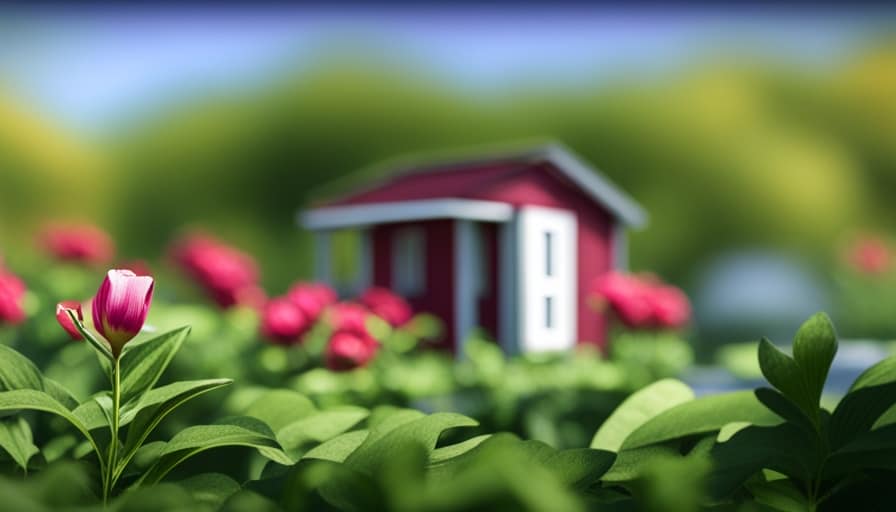
Last Resort: When All Else Fails, Professional Pest Control Options
If I’ve exhausted all other options, I’ll contact a professional pest control service to eliminate the moth infestation in my house. While natural remedies and DIY methods can be effective for small infestations, sometimes the problem persists or worsens despite our best efforts.
This is when it’s crucial to call in the experts. Professional pest control services have the knowledge, experience, and resources to effectively eradicate moth infestations. They’ll conduct a thorough inspection of your home to identify the source of the infestation and develop a tailored treatment plan.
The benefits of hiring professionals include their expertise in identifying different moth species, their access to specialized equipment and pesticides, and their ability to ensure the complete eradication of the infestation.
When all else fails, it’s best to rely on the expertise of professional pest control services to rid your home of those persistent moths.

Frequently Asked Questions
Can Moths Cause Any Damage to My House or Belongings?
Moths can cause damage to fabrics, carpets, and stored food. It’s important to address a moth infestation promptly. Using natural moth repellents, like lavender or cedar, can help deter them from your house and protect your belongings.
Are All Types of Moths Attracted to Homes, or Are There Specific Species That Are More Common?
In the world of moths, certain species have a penchant for our cozy homes. Understanding the types commonly found indoors can help us prevent the dreaded infestations from taking hold in the first place.
How Long Does It Usually Take to Get Rid of a Moth Infestation Using Natural Remedies?
Using natural remedies to get rid of a moth infestation can be effective, but the time it takes varies depending on the severity. Common signs of an infestation include sightings of adult moths and larvae, as well as damaged fabrics or food products.
Can Moths Carry Diseases or Pose a Health Risk to Humans?
Moths can transmit diseases to humans, so it’s important to take precautions. Individuals with allergies or asthma may experience respiratory issues due to moth infestations in homes.

Are There Any Specific Plants or Herbs That Repel Moths and Can Be Used as Natural Remedies?
Using natural moth repellents, such as specific plants and herbs, offers several benefits over chemical alternatives. Creating a moth repelling garden with lavender, rosemary, and mint can effectively deter moths from your house.
Conclusion
In conclusion, it’s essential to address the presence of these minuscule pests in your home promptly. By identifying the specific type of moth invading your space and understanding their attraction, you can take preventive measures to keep them at bay.
Utilizing natural remedies and seeking professional pest control services as a last resort will ensure a moth-free environment without compromising your household’s well-being.
Stay vigilant and employ these effective methods to bid farewell to these unwelcome visitors.

I’m Theodore, and I love tiny houses. In fact, I’m the author of Tiny House 43, a book about tiny houses that are also tree houses. I think they’re magical places where imaginations can run wild and adventures are just waiting to happen.
While tree houses are often associated with childhood, they can be the perfect adult retreat. They offer a cozy space to relax and unwind, surrounded by nature. And since they’re typically built on stilts or raised platforms, they offer stunning views that traditional homes simply can’t match.
If you’re looking for a unique and romantic getaway, a tree house tiny house might just be the perfect option.
Beginners Guides
How Difficult Is It to Build a Tiny House in Colorado Springs

I understand your concerns about building a tiny house in Colorado Springs. However, I can assure you that with the proper knowledge and guidance, it is completely achievable.
In this article, I’ll walk you through the zoning regulations, permitting process, finding suitable land, and navigating building codes. We’ll also discuss securing financing, budgeting, and dealing with utilities.
So, if you’re ready to embark on this rewarding journey, let’s dive in and make your tiny house dreams a reality.
Key Takeaways
- Zoning regulations and building permits are required for constructing a tiny house in Colorado Springs.
- Finding suitable land that complies with zoning regulations is important for placing a tiny house.
- Familiarizing oneself with local building codes and regulations, and following safety guidelines is necessary.
- Researching various financing options and presenting a detailed budget can increase the chances of securing financing for building a tiny house.
Zoning Regulations and Permitting Process
I’ll need to research the zoning regulations and permitting process before starting to build my tiny house in Colorado Springs. Understanding these regulations is crucial as they dictate where and how I can construct my tiny house.
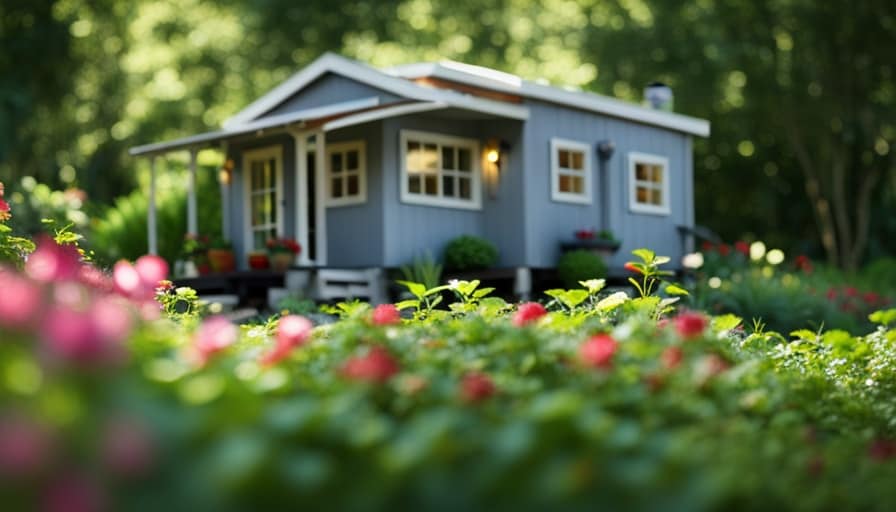
One key aspect to consider is the impact of tiny houses on property values. While some argue that they can decrease property values, others believe that they can actually increase them by adding diversity and uniqueness to the community.
Additionally, one of the challenges I may face is finding legal parking for my tiny house in urban areas. Many cities have restrictions on where tiny houses can be parked, making it essential to find suitable parking options that comply with local regulations.
With these factors in mind, I can now move on to finding suitable land for my tiny house.
Finding Suitable Land for Your Tiny House
After researching the zoning regulations and permitting process, it’s now time to start finding suitable land for my tiny house in Colorado Springs.
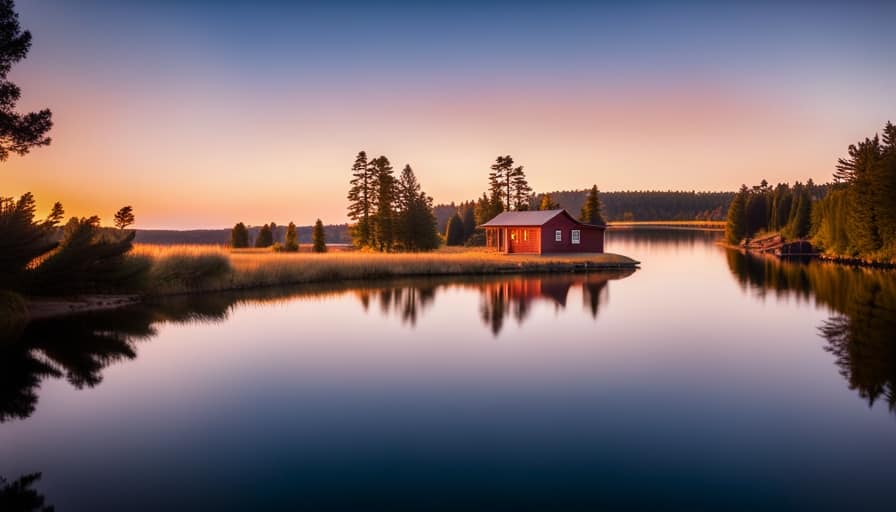
When it comes to finding land for a tiny house, there are a few important factors to consider. One of the major challenges is land availability constraints. Due to the increasing popularity of tiny houses, finding land that allows for their construction can be difficult. It’s important to do thorough research and explore different options, such as contacting local real estate agents or checking online platforms that specialize in tiny house-friendly land.
Additionally, environmental impact considerations are crucial. It’s important to choose a location that minimizes the impact on the surrounding environment and aligns with sustainable practices.
Taking these factors into account will ensure that I find a suitable piece of land for my tiny house in Colorado Springs.
Navigating Building Codes and Inspections
When it comes to navigating building codes and inspections for my tiny house in Colorado Springs, I’ll need to familiarize myself with the local regulations and ensure compliance throughout the construction process. Understanding local regulations is crucial to avoid any legal issues and ensure that my tiny house meets all the necessary requirements.
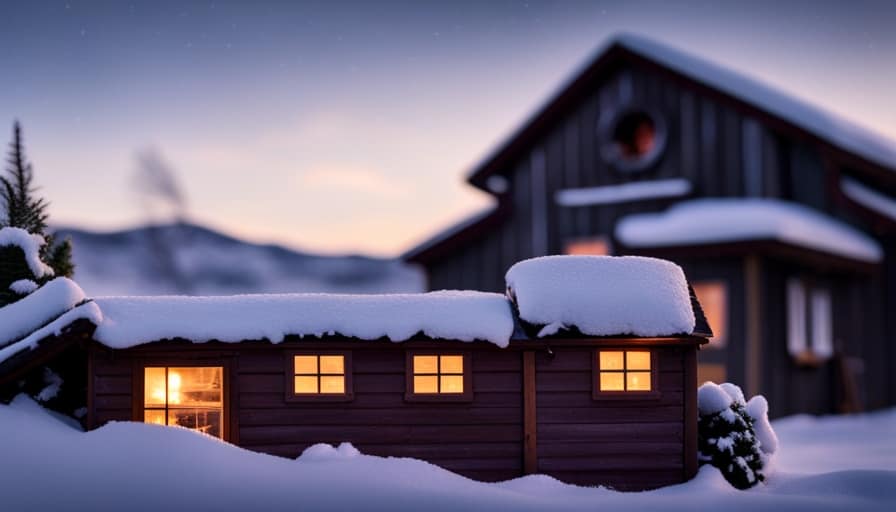
This includes obtaining proper permits, adhering to zoning laws, and following safety guidelines. To ensure a smooth process, I may consider hiring a professional builder who’s well-versed in local building codes and has experience with tiny house construction. Their expertise and knowledge will help me navigate the intricacies of the regulations and ensure that my tiny house is built according to the highest standards.
By understanding the local regulations and working with a professional builder, I can confidently proceed with my project while complying with all necessary codes and inspections.
With the building codes and inspections in mind, the next step is to secure financing and budget for my tiny house project.
Securing Financing and Budgeting for Your Project
To successfully secure financing and budget for my tiny house project in Colorado Springs, I frequently need to research various lenders and explore different funding options. Securing loans for a tiny house can be challenging, as it’s a unique type of project and not all lenders may be familiar with it. However, there are lenders who specialize in providing loans specifically for tiny houses.
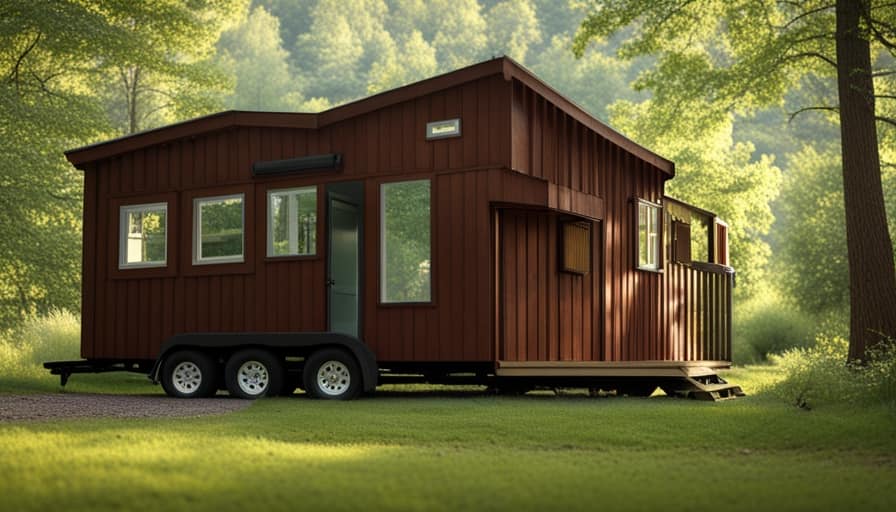
It’s important to gather all the necessary documents and information required by the lenders, such as the cost estimation of the project, including materials, labor, and any additional expenses. By presenting a thorough and well-prepared budget, it increases the chances of securing financing for the project.
Once the financing is secured, it becomes easier to move forward with the next steps of the project, such as dealing with utilities and exploring off-grid options.
Dealing With Utilities and Off-Grid Options
I can explore both traditional utility options and off-grid alternatives when dealing with electricity, water, and sewage in my tiny house in Colorado Springs.
When it comes to off-grid power, there are several options available. Solar panels are a popular choice, harnessing the energy of the sun to generate electricity. Wind turbines can also be used to generate power, particularly in areas with consistent wind patterns. Additionally, hydroelectric power can be harnessed if there’s a suitable water source nearby.
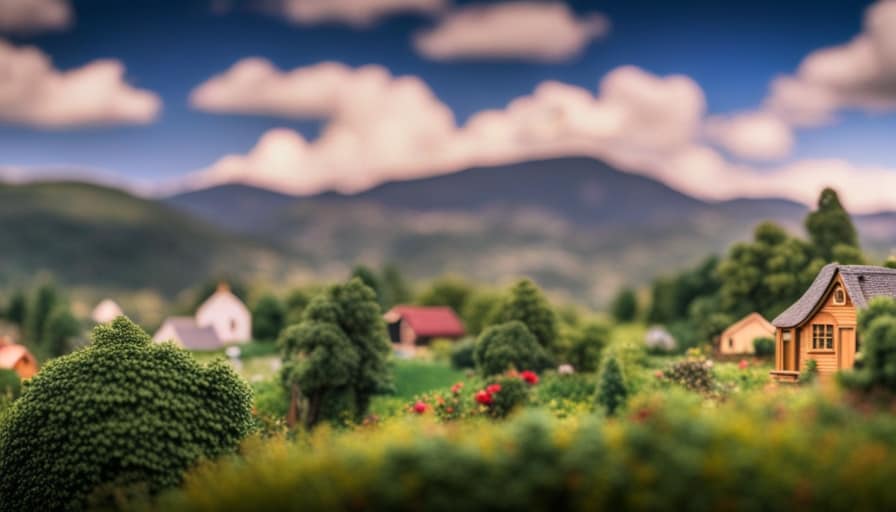
As for water sources, rainwater collection systems can be installed to capture and store rainwater for household use. Digging a well is another option, although it may require permits and additional expenses.
Lastly, composting toilets can be used to manage sewage in an off-grid tiny house, eliminating the need for traditional plumbing systems.
Frequently Asked Questions
What Are the Advantages of Building a Tiny House in Colorado Springs Compared to Other Cities in Colorado?
Building a tiny house in Colorado Springs has many advantages compared to other cities in Colorado. The city has a thriving tiny house community, supportive regulations, and an abundance of natural beauty to enjoy.
Are There Any Specific Design Requirements for Tiny Houses in Colorado Springs?
There are specific design requirements for tiny houses in Colorado Springs, including building regulations that must be followed. It is important to be knowledgeable about these requirements to ensure a successful and compliant build.

How Long Does the Zoning and Permitting Process Usually Take in Colorado Springs?
The zoning and permitting process in Colorado Springs can be a challenge. It takes time to navigate through the requirements and obtain the necessary approvals. However, with proper guidance and patience, it is possible to build a tiny house in Colorado Springs.
Are There Any Restrictions on Living in a Tiny House on Wheels in Colorado Springs?
Living in a tiny house on wheels in Colorado Springs comes with restrictions. Tiny house parking options are limited, and building codes for tiny houses must be followed. It can be challenging, but not impossible.
Can I Rent Out My Tiny House as an Airbnb in Colorado Springs?
Renting out a tiny house as an Airbnb in Colorado Springs is possible, but there are regulations to follow. It’s important to familiarize yourself with local zoning laws and obtain any necessary permits before listing your tiny house as a rental property.
Conclusion
Building a tiny house in Colorado Springs may be challenging due to zoning regulations, finding suitable land, navigating building codes, securing financing, and dealing with utilities.
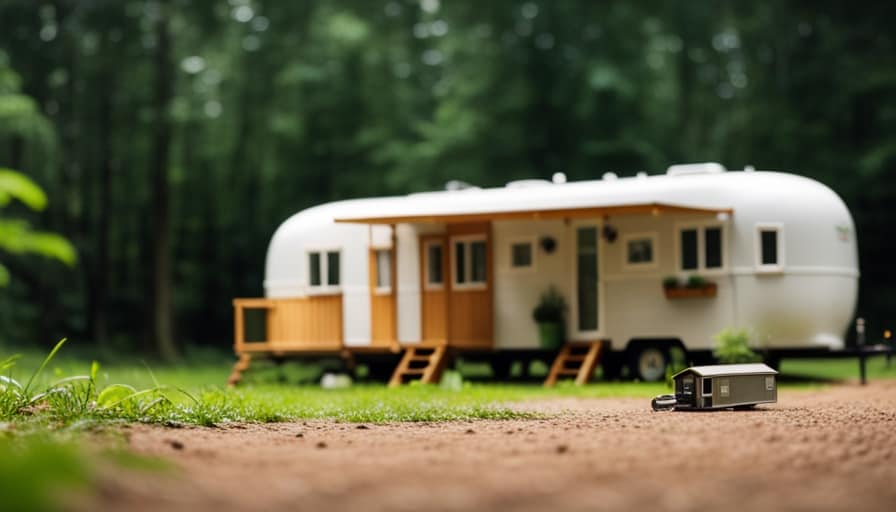
However, with determination and thorough research, it’s possible to overcome these obstacles.
For example, Sarah, a Colorado Springs resident, successfully built her own off-grid tiny house by carefully selecting land outside city limits, obtaining the necessary permits, and utilizing solar power.
Her experience demonstrates that with proper planning and knowledge, building a tiny house in Colorado Springs can be a rewarding and sustainable endeavor.
I’m Theodore, and I love tiny houses. In fact, I’m the author of Tiny House 43, a book about tiny houses that are also tree houses. I think they’re magical places where imaginations can run wild and adventures are just waiting to happen.
While tree houses are often associated with childhood, they can be the perfect adult retreat. They offer a cozy space to relax and unwind, surrounded by nature. And since they’re typically built on stilts or raised platforms, they offer stunning views that traditional homes simply can’t match.
If you’re looking for a unique and romantic getaway, a tree house tiny house might just be the perfect option.
-

 Beginners Guides2 weeks ago
Beginners Guides2 weeks agoHow To Buy A Tesla Tiny House
-

 Energy Efficiency2 months ago
Energy Efficiency2 months agoBest Tiny Homes For Cold Climates
-

 Beginners Guides1 week ago
Beginners Guides1 week agoTiny House Nation Where Are They Now Stephanie
-

 Tiny House Resources (e.g., legalities, cost, insurance, FAQs)2 months ago
Tiny House Resources (e.g., legalities, cost, insurance, FAQs)2 months agoDo Tiny Homes Need Planning Permission?
-

 Beginners Guides3 weeks ago
Beginners Guides3 weeks agoFrom The Show Tiny House Nation How Many Keep Their Tiny House?
-

 Beginners Guides2 months ago
Beginners Guides2 months agoUsing a Climbing Net For Treehouse Construction
-

 Beginners Guides2 months ago
Beginners Guides2 months agoHow to Build a Treehouse Without Drilling Into the Tree
-

 Beginners Guides3 weeks ago
Beginners Guides3 weeks agoTiny House Nation Who Pays For The Houses








